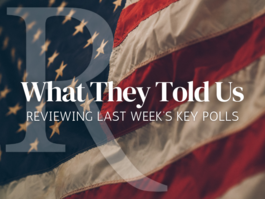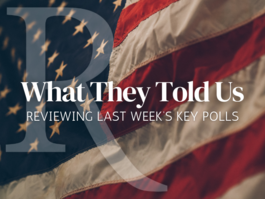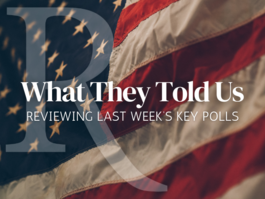A V-Shaped Boom Is Coming
A Commentary By Lawrence Kudlow
Sometimes you have to take out your political lenses and look at the actual statistics to get a true picture of the health of the American economy. Right now, those statistics are saying a modest cyclical rebound following a very deep downturn could actually be turning into a full-fledged, V-shaped recovery boom between now and year-end.
I'm aiming this thought especially at many of my conservative friends who seem to be trashing the improving economic outlook -- largely, it would appear, to discredit the Obama administration.
Don't do it folks. It's a mistake. The numbers are the numbers. And prosperity is a welcome development for a nation that has suffered mightily.
Credibility is at issue here. Conservative credibility. Capitalist credibility.
Now, I have written extensively about the tax-and-regulatory threats of the Obamanomics big-government assault. But most of that is in the future. The current reality is that a strong rebound in corporate profits (the greatest and truest stimulus of all), ultra-easy money from the Fed and some small stimuli from government spending are working to generate a stronger-than-expected recovery in a basically free-market economy that is a lot more resilient than capitalist critics think.
Rather than blow their credibility over a cyclical rebound that is backed by the statistics, free-market conservatives should tell it like it is.
Let's begin with the March employment numbers recently released by the Labor Department. Those numbers were solid. People say small businesses are getting killed by taxes and regulations from Washington, but the reality is that the small-business household employment survey has produced 1.1 million new jobs in the first quarter of 2010, or 371,000 per month. If that continues, the unemployment rate will drop significantly.
Additionally, the corporate payroll number for March increased by 224,000 -- not 162,000, as some claim -- with the prior two months being revised up by 62,000. And this is being led by private-sector job creation.
And according to just-released data, retail chain-store sales for the year ending in March were up a blowout 10 percent. Ten percent. That's a V-shaped recovery. And the real-time ISM purchasing-managers reports for manufacturing and services indicate that the economy in the next few quarters could be much, much stronger than the consensus expects -- maybe 5 percent to 6 percent. Another V-shaped recovery.
Commodity charts, meanwhile, are roaring. All manner of raw industrial materials have been booming -- iron ore, steel, you name it. More V-shaped recovery. So with higher commodity prices running virtually across-the-board, there is every incentive for rapid inventory-rebuilding. (Inventory prices are going up as commodity prices go up.)
At this point, it's impossible to project a long-lived economic boom, such as we had following the deep recession of the early 1980s. For one thing, tax rates will rise in 2011 for successful earners and investors, quite unlike the Ronald Reagan cuts of the 1980s. So it's possible that entrepreneurs and investors are bringing income, activity and investment forward into 2010 in order to beat the tax man in 2011. This would artificially boost this year's economy, stealing from next year's economy.
Recall that when Hillary Clinton took her Rose Law Firm bonus in December 1992, rather than January 1993, she knew full well that her husband Bill would raise the top tax rate in 1993. So the fourth quarter of 1992 grew at nearly 4.5 percent, but the first quarter of 1993 saw less than 1 percent growth. The temporary growth spurt for all of 1992 was 4.3 percent, but activity dropped to 2.7 percent the following year.
It could happen again in 2010 and 2011. Although the Obamacons deny it, tax-rate incentives matter a lot.
And at some point, monetary policy will tighten, with higher interest rates on top of higher tax rates. That, too, could slow growth markedly next year. And then there's the dozen tax hikes in the Obamacare health takeover, and a possible VAT attack from Paul Volcker, all of which will work against growth in the out-years.
Clearly, we are not operating a supply-side, free-market model today. What I wish for is sound money and lower tax rates, which would promote sustainable economic growth. Instead, we're getting easier money and higher tax rates, which could mean a temporary boom today and disappointingly slow growth after that.
But then again, who knows? Maybe the tea-party revolution overturns the obstacles to future growth and the boom is sustained. Free-market populism and a return to Reaganism, along with an anti-federal-spending coalition that is the most powerful force in politics today, could right the economic ship.
That's the credible take.
COPYRIGHT 2010 CREATORS.COM
See More Commentary by Lawrence Kudlow
See Other Political Commentary
Views expressed in this column are those of the author, not those of Rasmussen Reports.
Rasmussen Reports is a media company specializing in the collection, publication and distribution of public opinion information.
We conduct public opinion polls on a variety of topics to inform our audience on events in the news and other topics of interest. To ensure editorial control and independence, we pay for the polls ourselves and generate revenue through the sale of subscriptions, sponsorships, and advertising. Nightly polling on politics, business and lifestyle topics provides the content to update the Rasmussen Reports web site many times each day. If it's in the news, it's in our polls. Additionally, the data drives a daily update newsletter and various media outlets across the country.
Some information, including the Rasmussen Reports daily Presidential Tracking Poll and commentaries are available for free to the general public. Subscriptions are available for $4.95 a month or 34.95 a year that provide subscribers with exclusive access to more than 20 stories per week on upcoming elections, consumer confidence, and issues that affect us all. For those who are really into the numbers, Platinum Members can review demographic crosstabs and a full history of our data.
To learn more about our methodology, click here.



